Getting burgled is one of the most stressful things that can happen. It’s not just the financial loss, but the horrible knowledge that some stranger with a crowbar has been rifling through your possessions.
The average “cost” of a burglary in America - which includes incidentals like the cost of replacing your locks, as well as the value of goods stolen – is around $2200, according to the FBI. And then, to add insult to injury, your insurance premiums go up afterwards!
However, most thieves are smash-and-grab types, nothing like the slick bankrobbers you see in the movies. They’re looking for an easy way in and a quick way out. Just a few burglary prevention gadgets can make your home much more secure.
Studies have shown that most burglaries are partly opportunistic: criminals tend to form a vague idea of their crime in advance, but choose specific targets on the spur of the moment.
For example, a housebreaker might drive to Wisteria Road intending to break into one of the big properties there, but he won’t decide which one until he notices that every house except number 58 has an alarm system (source). So the best way to burglar-proof your house is simply to make it look less vulnerable than your neighbor’s.
Often, you don’t need to turn your house into Fort Knox to deter break-ins: it’s sufficient to make it look like Fort Knox.
So here we go,
17 Anti-Burglary Products To Ward Off Thieves And Keep Your Home Safe
1. Ring Video Doorbell
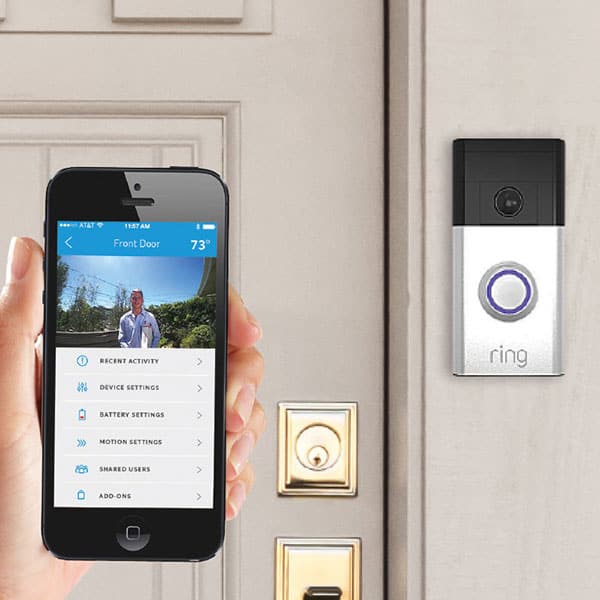
Ring Wi-Fi Enabled Video Doorbell is one of the most popular, if not the most popular video doorbell. This doorbell is similar in that it lets you see on your smartphone screen what the camera registers. With the Ring app you will be able to see, hear and communicate with whoever is at your door, no matter where you are. Decide from the couch if you want to get up or even see who’s at your door when at work or the beach during holiday.
2. Fake TV light
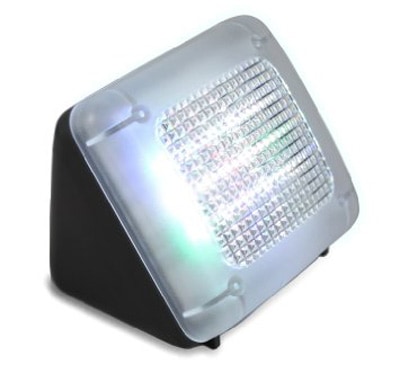
This is a small light which flashes different colored LEDs in a semi-random order, to mimic the flicker of a TV screen. This handy anti-burglary gadget uses little more electricity than a lightbulb; it can be programmed to come on automatically, and makes your timer lights look much more realistic. The Hydreon FakeTV offers much more green option than leaving the TV set on while you are away. Which also eliminates the risk of a house fire caused by the TV.
3. Window / Door alarm
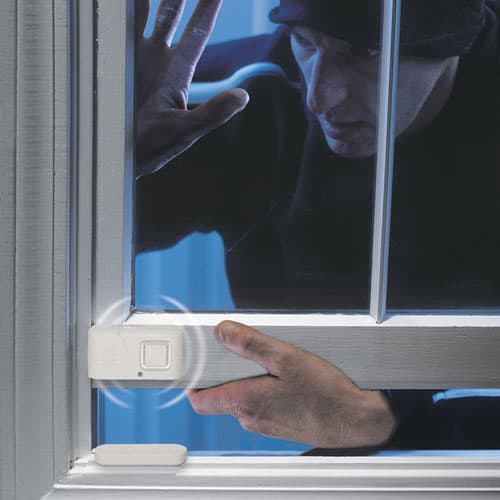
Ward off thieves with anti-entry devices such as the GE Personal Security Window/Door Alarm. With its 120 decibel alarm this simple gadget protects against home invasions. Often used for travel security too.
4. Visible (deadbolt) locks
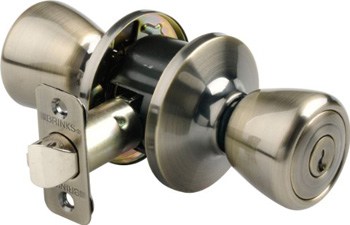
According to FBI statistics, around 65% of America’s 2m annual burglaries involve forced entry. To put it another way, 35% involve thieves just strolling into the house unimpeded and helping themselves.
Strong locks are essential. They form a physical block and a psychological deterrent, by giving the impression of a well-protected home.
Standard spring-loaded locks can be picked open within a minute by an experienced housebreaker, so you’ll need to beef up your security with more than one type of lock. Deadbolts are the most reliable – these can’t be picked, only opened with a key.
If you’re worried about safety when you’re in the home, then note that a standard door chain is easily forced open by a strong kick – a “London lock” (with a complicated clasp system to unlock the chain) offers a lot more security while you check the credentials of visitors.
A well-reviewed option is this secure lock by Master Lock.
5. Keypad deadbolt locks
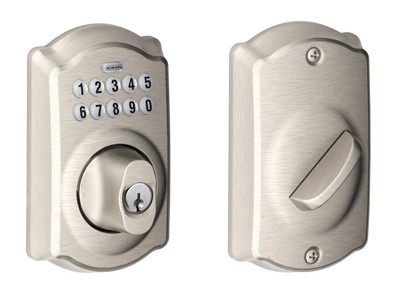
Poorly hidden house keys, for instance under the doormat, the garden gnome, or a plant pot are contributing to a rise in home burglaries according to police statistics. Your hiding spot is not so good as you may think, even for short periods of time this is a surefire way to get robbed.
Which is why this Schlage keypad deadbolt lock is such an effective anti burglary gadget. No more hiding keys under the doormat. No more losing keys. No risk on thieves entering your home with your own key.
It sounds obvious, but there’s no point putting a strong lock on a weak door. Hollow doors are easily smashed in, and old wooden doors sometimes have panels that can be wiggled free with a little pressure. In older houses, burglars have been known to kick the entire doorframe away from the surrounding wall rather than bother picking the lock. If your door is weak or loosely attached, switch it for a solid wood or metal-plated replacement before you upgrade the lock.
6. Motion-activated lights
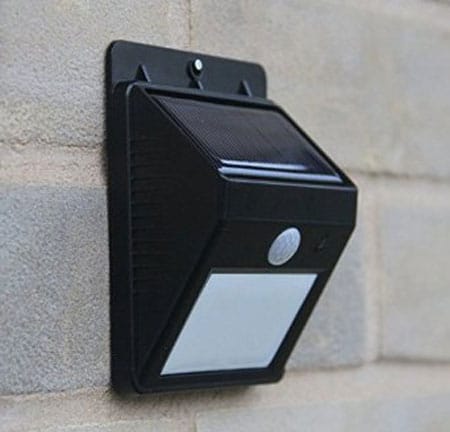
They use an infra-red beam to detect intruders within a range of about 20 metres. Depending on the location, you can either power them from your home electrical supply, or use ‘wedge lights’ with a solar panel at the top.
The advantages of lights are two-fold. If you hear a noise in your garden, a motion-activated light will let you peek out of the window and see what’s going on; and they will make a burglar fear being seen by the neighbors or caught on CCTV.
The trouble with motion-sensor lights is that they can be easily set off by a stray cat or a passing pedestrian. Often, neighbors get so used to the lights going off that they stop taking any notice of them.
If your house isn’t overlooked at all, then the lights may even have a counterproductive effect. If you drive around a remote industrial area late at night, you’ll notice that most warehouses aren’t lit up; if there are no witnesses around, then a bright security light just makes it easier for burglars to see what they’re doing.
Lights aren’t much of a burglar deterrent on their own, but combined with something like cameras or a neighborhood watch scheme they can be very effective. For a well-reviewed motion activated security light see this one by Swiftly Done.
7. Home alarm system
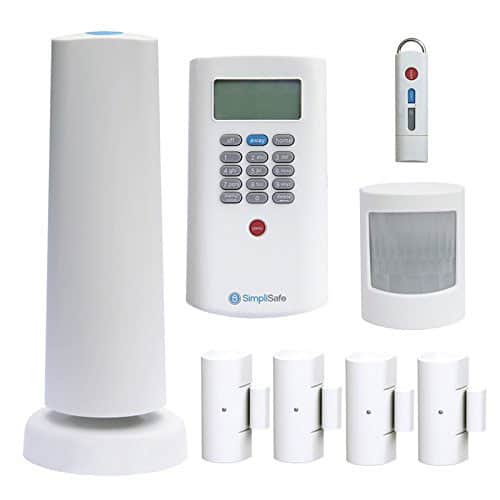
According to a survey of imprisoned burglars, the sight of an alarm deters them as effectively as the knowledge that the house is occupied (source). Alarms come in all types, from the most basic “box that makes noise” to fully-integrated home alert systems which automatically notify the police. A wireless alarm system is more dependable, because it will still work even if the power or telephone lines to your home are cut.
The main reason that home security systems fail is that homeowners stop activating them, after getting sick of false alarms. For this reason, it’s important to read reviews and choose an alarm which is reliable.
You can pay extra to have the alarm monitored by a security company, which will send guards out to investigate anything suspicious, but that’s rarely necessary unless your home is going to be unoccupied for a long time. Most burglars spend less than ten minutes inside a property (source). Even if a security guard leaps into his car at the moment your alarm goes off, the perpetrators will probably be gone by the time he gets to your home.
For a highly popular home alarm check out the Simplisafe2 Wireless Home Security System.
Tip: don’t install the control pad where it can be seen from outside through the decorative glass. A quick glance let’s potential burglars know if it’s set.
8. Warning stickers
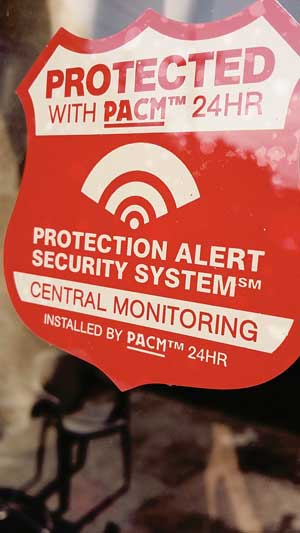
Something like an alarm warning sign, a “beware of the dog” sticker, or even an NRA membership decal, suggests to a would-be burglar that the house is protected. Of course, an experienced thief wouldn’t always be put off by a sticker saying “Smile! You’re on CCTV”, but if you can back it up with other burglar deterrents then it will add to the impression that the house isn’t worth the trouble of breaking in.
After all, there’s not much point having an alarm or a CCTV system if burglars aren’t made aware of the fact. Otherwise, your 100-decibel alarm won’t scare them off until they’ve already smashed one of your windows.
Security companies (such as alarm manufacturers) often give out free stickers with their products, but it’s safer to use generic notices. If you post stickers with the name of the company, a housebreaker may be able to override your system. It doesn’t require much technological expertise, just a rough knowledge that company X usually programmes their alarms in a certain way.
9. Wireless surveillance cameras
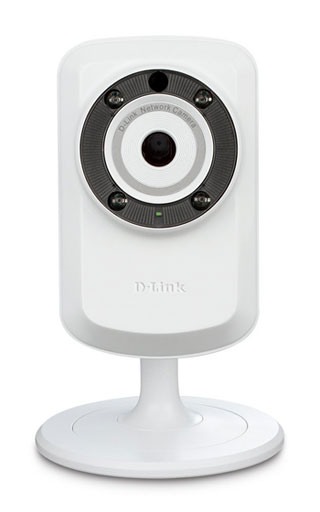
The vast majority of thieves are repeat offenders, and the last thing any of them need is hard evidence to be presented to the judge next time they’re hauled up in court.
Cameras also provide a handy way to monitor your property while you’re away, or even just see who’s at the door without getting up from the sofa – most home CCTV systems can be hooked up to your phone, so you can check out your house remotely.
You’ll want to buy a system with good night-vision and enough hard-drive memory to store a few days’ worth of images. A good CCTV system will cost at least a few hundred dollars; if you don’t want the cost and trouble of installing cameras, then it’s possible to buy dummy ones which look identical to the real thing.
- There’s one big disadvantage to CCTV cameras. The video images will help police to identify the perpetrators – but by that time, your possessions will be long gone. So it’s wise to really publicize the fact you have CCTV, and back it up with other security measures; the aim is to deter thieves from even trying, not to let them waltz into your home and film them as they walk off with your possessions.
An affordable and effective alternative is to opt for a wireless surveillance camera such as this bestselling system by D-link. It does not record video but captures images. For less than $90 you have a compatible video recorder.
10. Fake cameras
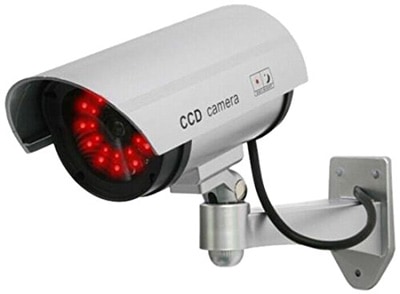
An inexpensive option, fake cameras offer an effective deterrent as long as they appear real. Therefore, skip the cheap plastic models that are easily sniffed out by criminals as dummies. Quality fake security cameras look like the real thing, many have a blinking LED light to make them less easily identifyable as fake.
11. Fire safe
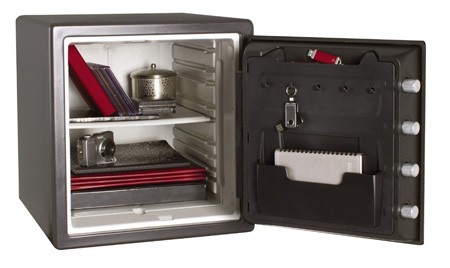
You’ve undertaken all these burglar-proofing steps to make sure unsavory characters stay out of your home, but it’s worth thinking about what might happen if the unthinkable happened and someone did get in. Are your valuables well secured?
A good safe is an excellent place to store your valuables – as long as you’ve got something strong to attach it to. A safe which is set into the wall or bolted to a floor joist is almost entirely burglar-proof.
If your safe is just sitting in a corner of your office, then you might as well not have one; a thief will snatch it up and carry it home to break into at their leisure, grateful that you’ve made their life easy by collecting all your valuables into one easily-portable box.
12. Indoor hidden camera
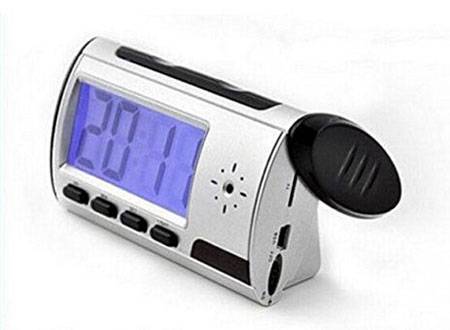
Cheaper and easier than a security camera, a covert indoor camera can be as simple as a webcam tucked into a hidden corner of your room. They are easy to install, and are a handy solution for renters – fitting an outdoors security camera requires drilling into the external walls, but anyone can hook up a webcam.
If you’re planning to follow this route, then tuck the cameras away somewhere discreet (perhaps tucked into a piece of furniture with a hole drilled), because these small cameras are easily smashed by an angry burglar.
13. Timer lights
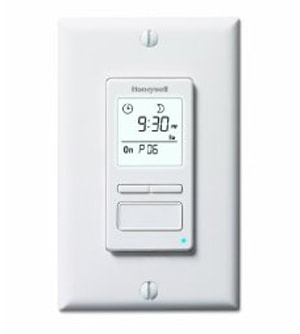
A lot of homeowners leave the lights on when they go out, hoping it will make the house look occupied. But when you’re at home, you don’t leave all your lights blazing constantly – you switch lights on and off as you move from room to room. Timer switches will change the lighting at regular intervals, so your house looks busy even when it’s empty.
These are great if you’re going away on holiday, or even if you’re just out for the evening. A popular choice is the Honeywell Econoswitch programmable switch.
Tip: If you’re worried about sneak thieves breaking in while you’re asleep, then try leaving the bathroom light on all night. As one former burglar wrote in his autobiography, “The john is the one room which you could be using at any time of night. Nobody’s going to question why you’re sitting in the bathroom at 2am”.
14. Letterbox cage
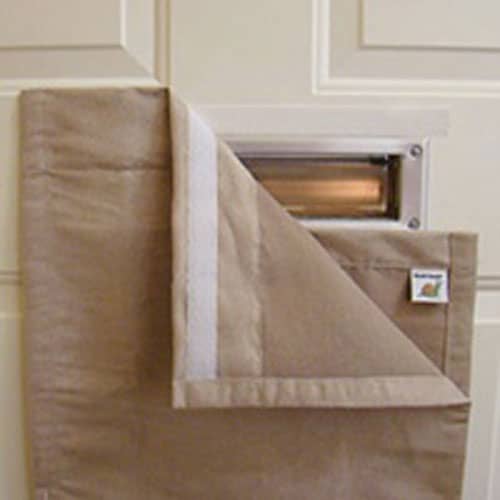
The most tell-tale sign that someone’s on vacation is a pile of letters behind the door. If you’re going away, a mail catcher traps letters neatly so the build-up can’t be seen through the letterbox. Combined with timer lights, this can help make your home look occupied when you’re not around.
What about when you’re home? Well, a letterbox cage keeps your keys from falling into the wrong hands. It’s fairly common for burglars to ‘fish’ keys off a hallway table by pushing a long wire through the letterbox. And once they’ve got your keys, they can either drive away in your car immediately or return at their leisure to go through your house. The mesh of a letterbox cage stops them in their tracks.
15. Security window film
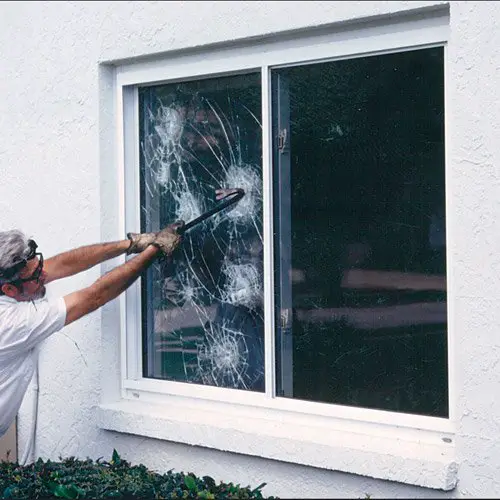
Security window film is a simple and clever burglary prevention tool. It’s a clear adhesive film you apply to any windows which can be reached from the ground; if the glass is smashed, the break proof laminate holds it together, a bit like safety glass. It makes the glass less likely to shatter, but it also means it’s harder for a would-be burglar to push the shards out and clear the windowframe.
Once you’ve put tough locks on your doors and windowframes, then the only remaining way for a burglar to get in is through the glass. Slow them down with window laminate, and all but the most determined crook is likely to run off. A retired cat burglar pointed out that “Speed is a crook’s biggest weapon…almost anyone who tried to break in and hit a laminated window would run off”.
Laminate is especially useful if you’re on a tight budget, or living in rental accommodation: it’s cheap, easy to apply, and quick to remove.
16. ‘Decoy’ items
Most burglars work at high speed, and the most commonly stolen items are cash, small electronics, jewelry, and weapons. If you keep little-used valuables in your home (such as family heirlooms), consider storing them in out-of-the-way corners, while leaving cheaper things in temptingly obvious places.
Fill your jewelry box with flashy silver-plated necklaces, and store Grandma’s engagement rings in a box of old Christmas decorations. Unless a thief already knows his way around your house, he will snatch up the obviously-placed sparkly things and run.
17. Electronic watch dog
A snarling dog is an excellent burglar deterrent. Burglars are scared of the cops, but at least police officers are supposed to use only reasonable force; an Alsation feels no such restraint.
Still, buying a dog is a big investment of time and money, even if you’re a dog lover. What if he grows up to be so savage he attacks the UPS guy? Or so goofily affectionate that he tries to play Fetch with a home invader?
A lot of homeowners make the mistake of ignoring their dog’s signals. One career burglar joked, “If I had a dollar for every time that a dog’s been barking like mad and their owners have yelled at them to be quiet….well, I wouldn’t have to break into houses no more.”
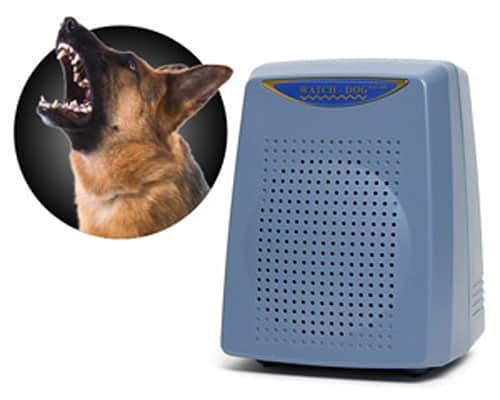
This is where the electronic watch dog comes in. It’s a burglar deterrent gadget which works a little like a motion sensor light. As a person approaches your home, the sensor picks them up and starts playing realistic barking noises; if the person approaches closer, the barks get louder and more frenzied. These gadgets fall in the category of so called ‘occupancy proxies (e.g., dogs, alarms, a car in the driveway) which help deter burglars according to experts.
You may wonder if burglars can’t detect the difference between a real dog and this electronic gadget but in reality, no burglar is going to waste their time on deciding if it is real. They will skip your home in favor of a house without the sound of barking.
A bonus of the electronic watch dog? Since you know there isn’t a real dog in the house, you’ll never ignore barking in the middle of the night.
‘Burglars hate noise neighbors and loud dogs’, said a convicted burglar.
In sum
100% burglar-proof is a myth but you can take matters into your own hands and discourage thieves from entering your home and make the walk by to pick another victim instead. Which anti-burglary gadgets do you prefer?
References
FBI’s Uniform Crime Reporting (UCR) Program, FBI.gov.
Residential Burglary: methodological and theoretical underpinnings, eprints.port.ac.uk.
Repeat and Near-repeat Burglary Victimization in Rochester NY Literature Review. Rit.edu.
Last Updated on November 16, 2015 by Tyler
